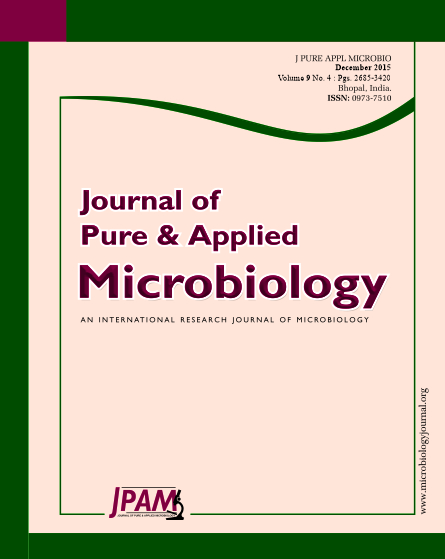Sclerotium rolfsii Sacc. is a well known, most destructive, soil borne, polyphagus fungus that lives as a facultative parasite. It is known to cause disease in more than 500 crops. S. rolfsii collected from different host and geographic locations in Karnataka, Isolates were examined for their molecular variations. Out of 37 isolates collected twelve isolates were selected and tested for their molecular variability. RFLP (Restriction Fragment Length Polymorphism) banding patterns were established for twelve isolates of S. rolfsii DNA amplification observed for ITS rDNA region at 550-600 bp in all the 12 isolates. The phylogenetic tree showed that four isolates Dharwad soybean, Bengaluru groundnut, Bengaluru chickpea and Davanagere sunflower belong to cluster I while one isolate Raichur groundnut belong to cluster II. PCR-RFLP of ITS region showed different patterns between the isolates of S. rolfsii after digestion with six enzymes Viz., AluI,HinfI,TaqI, HindIII, EcoRI and HaeIII indicating genetic variability among the isolates that varied in size of RFLP fragments and the number of fragments. Jaccards similarity co-efficient (UPGMA cluster analysis) among the twelve isolates were calculated to establish their genetic relationship. The similarity index values ranged from 31 to 93 per cent indicating the presence of high range of variability at the nucleic acid level among the isolates. The maximum genetic similarity of 93 per cent was observed between BelGn and KGn isolates, whereas least similarity of 31 per cent was observed between ChiGn and BFM isolates.
Sclerotium rolfsi, Molecular variability, foot rot, ITS-PCR-RFLP.
© The Author(s) 2015. Open Access. This article is distributed under the terms of the Creative Commons Attribution 4.0 International License which permits unrestricted use, sharing, distribution, and reproduction in any medium, provided you give appropriate credit to the original author(s) and the source, provide a link to the Creative Commons license, and indicate if changes were made.


